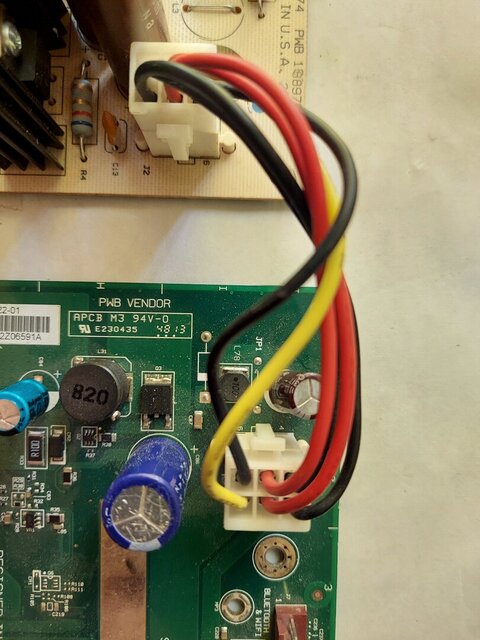Normally I'd give it a thumbs up. Unless you have a receiver with an external power supply or one you can open and probe the power points. Pure sine wave inverters are probably the way to go. Good ones like for solar installs are very power efficient. They will be a bit more expensive than truck stop junk or wally world ones. They're not power hogs and with a real sine wave versus modified sine wave, your electronics will be happy. Think something like Renogy or Tripp Lite if your pockets are deep.
Dave. I went over your response. Let's look at a few things. I have a torn apart Dish receiver in my donor board bin.
It looks like the separate internal power supply has +12 VDC output and +5 VDC output to the board.
My Sony TV has an external power supply brick and its output is 24 VDC.
My laptop power supply, as most laptops, has an 18 VDC output on the barrel plug.
Cable modem
Router
8 port Ethernet switch
OsMio4k
Fire TV
Roku.....
They all take 12 VDC from wall warts. I currently have a Mean Well 120 volt mains to 12 VDC switching power supply. With a terminal strip. Sourced all of the correct barrel connector pigtails. All of the 6 devices run off the single power supply. It's a good one with all of the safety features. I've fused the terminal strip, because that's what you have to do. Not so expensive but a bit of a pita finding the right pigtails. I had to buy bags of 5 for a few.
My friend came in from Arizona. His RV has 2-185 watt solar panels mounted on the roof. A Renogy charge controller and Renogy off grid inverter. 2 storage batteries.
He said after a full charge (which occurs around noon). He can run his tv, satellite, lights, laptop, occasional water pump for a shower. Wifey can use her hair dryer (on low). Nuke a few TV dinners on TV dinner nights. And as far as he said he knows. Never exhausted the batteries. There's a display showing system health and an app on his phone with warnings if batteries get low. As well as if something goes south.
We got talking. Installed 2 more batteries. Just because he had the room in the outside cubby hole.
He's taking stats. Which the Renogy system does well. All batteries are charged by around 2pm. Maybe a little later on a cloudy day.
He's quadrupled his run time. Or, as he said, "Doesn't have to stay on top of what he can run and how long."
What am I getting at? UPS supplies are grossly inefficient. They go balls-out if your power goes off.
I put 2 more external batteries on my garage APC Back Ups 1500 watt UPS. It surely didn't make it last twice as long if the juice goes out. And on REC, that happens more than I'd like. I'm glad I put my solar install in.
By the time you get stuff together. Buck, boost converters, regulators, parts. Just YouTube 12 volt high efficiency solar inverters (my friend's system is 24 volt). It may change your mind. Hopefully this will give you a bit of insight.


